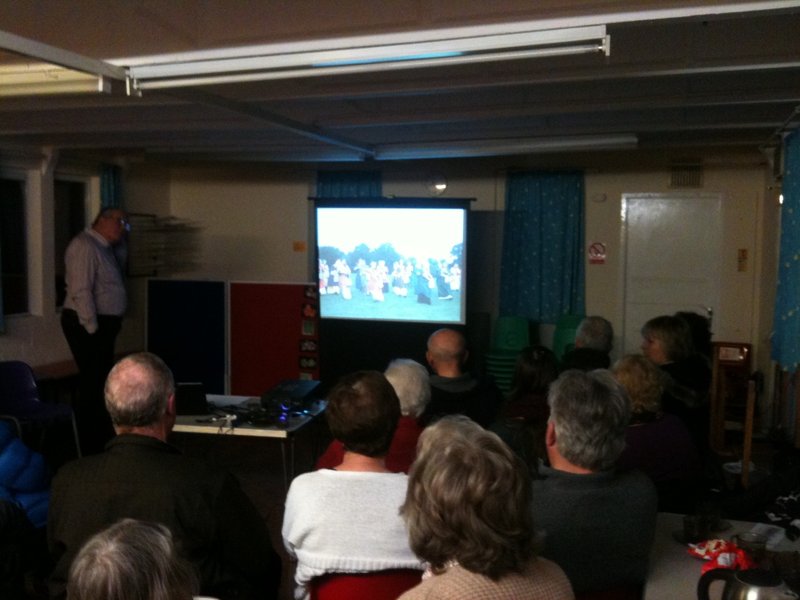Watching pageant films
Last nightI went to a talk near where I live, Fleetville
in St Albans, part of the Fleetville
Diaries series. This group runs regular events with guest speakers,
focusing on local history and sometimes ranging more widely. They also have
guided walks around Fleetville in the summer months.
The evening’s speaker was Peter Swinson, whose father Cyril (1910-63) was the pageant-master in the St Albans pageants of 1948 and 1953. The first of these featured as the second of our ‘Pageant of the Month’ series on this site.
Peter told us a bit about his father, who was one of the most prolific post-war pageant-masters, as well as being a writer (using the pseudonym Hugh Fisher), publisher (he was a director of A. & C. Black, and had a particular specialism and interest in ballet) and notable citizen of St Albans. It is remarkable that this man – who commuted to London every day – was able to pursue such a range of interests: he was the founder of the Company of Ten theatre group and the St Albans Ballet Society, and founding vice-chairman of the St Albans Civic Society, as well as chairing the local branch of the Workers’ Educational Association ... and still found time to produce pageants, not only in St Albans but also at Wisbech in 1949, Hitchin in 1951, King’s Lynn in 1954 and a number of others.
The highlight of the evening was the rare opportunity to watch film footage of the two pageants – in both cases, in colour. I had seen these films before, but only very crackly versions, whereas Peter has managed to clean up the film. We are unused to seeing the 1940s and 1950s in colour – and in the case of both pageants, the colours were bright and cheerful. I noticed particularly the medieval peasants’ costumes, and the large green dragon, mounted on bicycles that are just visible in the film, that formed the comic highlight of the 1953 pageant. Both films are edited highlights of the pageants, about half an hour long each.

For both pageants, the films were made during rehearsals, and sometimes the weather changes quite suddenly between scenes. There is, however, a brief glimpse of the grandstand in the 1953 film. Perhaps this was during a performance, or perhaps the stands got busy during rehearsals too?
One thing I learned from Peter’s presentation was that these pageants used amplified sound to ensure that the audience could hear the words, but that the actors themselves mimed their roles. We have come across this before, at Bury St Edmunds, and doubtless the technique was used in many other places.
The event attracted a good audience of 35 to 40 people, showing how popular the subject can be for a local history audience. Many in the audience remarked on the number of performers, the care that had clearly been taken with the costumes, the use of horses, and challenges of mounting such a large production.
There was no sound in either film, but there was a suggestion that someone might record some of the dialogue and create a soundtrack for the films. Now there’s an idea for us...
Mark Freeman
